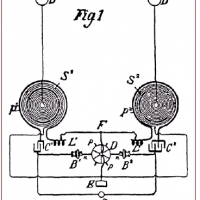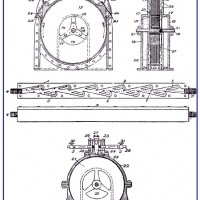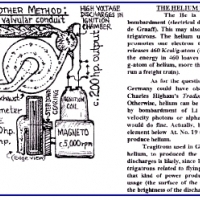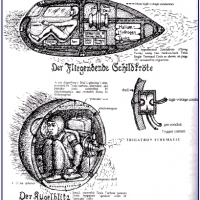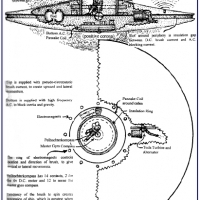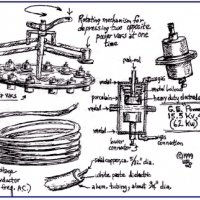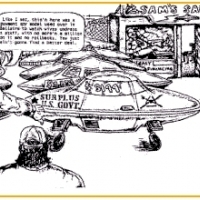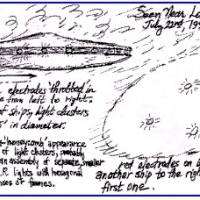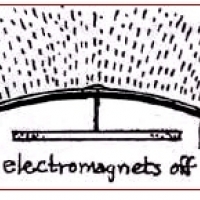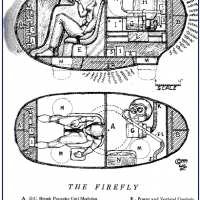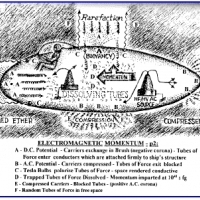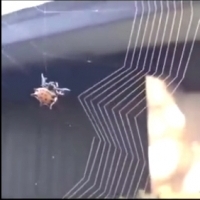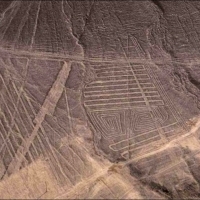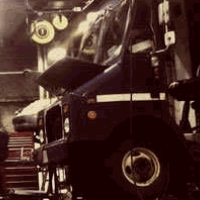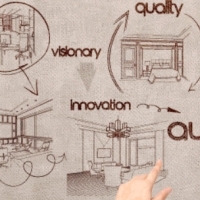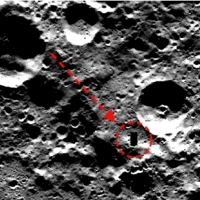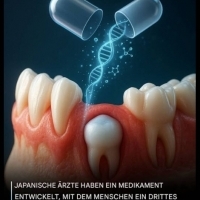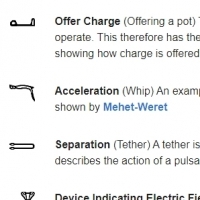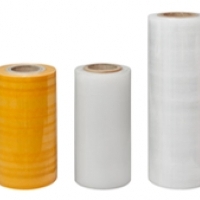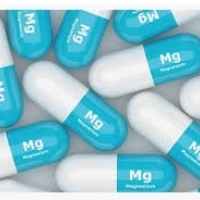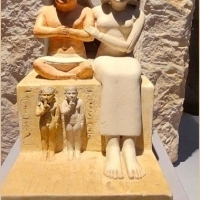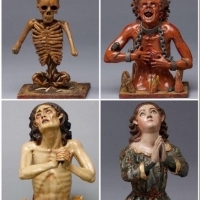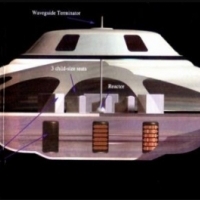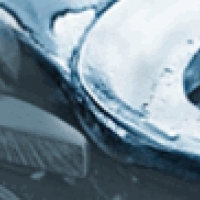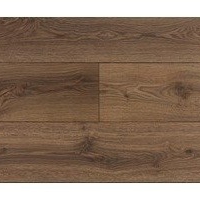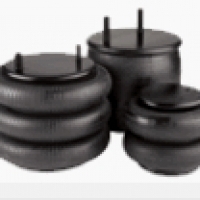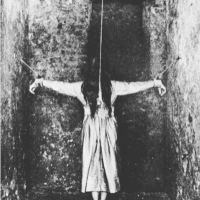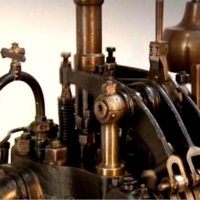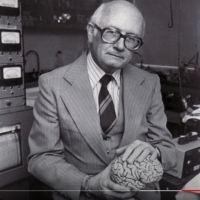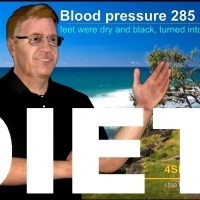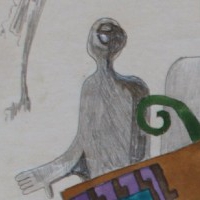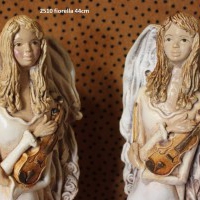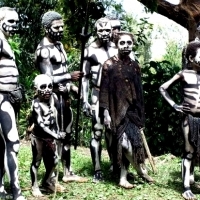0 : Odsłon:
CHAPTER V: HOW TO BUILD A FLYING SAUCER
Author’s Disclaimer
In consideration of the author’s sale, and of the reader’s purchase or reading of this book, the purchaser or reader is hearby deemed to understand and agree to the following:
That she or he assumes all physical risks of any harm to anyone, attendant to the constructing, testing, flying, or attempting to fly, a flying saucer constructed as herein suggested
that the author assumes no liability whatsoever, either civil or criminal, as to these suggested plans or the theories contained herein, and is hereby released from any and all liability or claim, or allegation of liability
that the purchaser or reader, who is presumed to be an ordinary, reasonable and prudent person, with control over his or her decisions and actions, is urged to respect the obvious and inherent dangers of electricity, the force of gravity, and flight, and to become familiar with pertinent F.A.A. regulations and applicable state and federal laws, if any, and hereby assumes complete responsibility for all such particulars
It is hereby agreed and understood that these plans are hypothetical, provided only for the purpose of the investigation and understanding of flying saucer theory, flight and construction, and that the author gives no warranty, either express or implied, that a flying saucer constructed according to these plans will work or be safe to the operator or others
A. GENERAL CONSIDERATIONS
First, it is recommended that a flying model be built and tested before proceeding further, as it would be very disappointing to build an elaborate saucer which doesn’t work. The fundamental principle is simple: to electromagnetically synthesize momentum, employing a high voltage D.C. brush discharge, in the direction of desired acceleration, to draw in and cause the exchange of ether carriers, which also brings in the tubes of electrical force, and to cause the tubes to dissolve in the conductors of the ship, which imparts momentum to the conductors, at 90 degrees to the electric current and magnetic inductance.
In order to facilitate the dissolution of the tubes of force, an alternating current of sufficiently high frequency is utilized on the opposite end of the ship, to compress and block the ether carriers and tubes of force, so that they cannot pass out the rear, and are thereby forced to dissolve to impart momentum in the opposite direction. The hull should be accelerated, creating electromagnetic momentum in the desired direction almost instantaneously.
A Tesla coil is used to create a negative D.C. brush discharge on one electrode, and another Tesla coil is used on the opposite electrode, to create an A.C. high frequency, which compresses the ether carriers and tubes of force, and blocks their passage. These two electrodes comprise a “p2”—two different primaries—one—the D.C. brush— which draws in the tubes of force, and the other—the A.C. current—which blocks the ether carriers and forces the tubes of force to dissolve.
The D.C. brush produces “negative (“hairy”) corona”, and the high frequency A.C. produces “positive (“cloudy”) corona”. It is believed that this system not only creates instant momentum in the direction of the D.C. brush, but eliminates the problem of inertia in the direction of the A.C. high frequency current, so that the rate of acceleration is virtually unlimited, and the destructive effect of acceleration is eliminated, since all parts of the ship and its contents accelerate at the same rate, without inertia.
This also applies to instant turns, in which the force of acceleration acts on all parts of the ship and its contents, to re-orient the force of momentum on each atom and molecule, in the new direction, eliminating centrifugal force. The kind of ship shown by these plans however, is of what I call the “linear type”, which turns in a curving path, rather than in sharp angles, because this type of ship is easier to construct and control.
In order to properly control the currents from the Tesla coils, specially designed switches, relays, capacitors, dielectrics, inductors and conductors are required. In these hypothetical plans, I provide my own design, which could conceivably be built by a skilled home craftsman. I also describe what I believe to be a control system which will be practical, reliable, and easy to construct, probably similar to what Tesla used on his “Flivver” machine, his manned, electro-propulsive ship of the earliest type.
1. SIZE AND SHAPE
Since this ship is to be of the simplest type, it is no larger than required for one or two people. It is designed to be as small as possible, yet to have the necessary equipment and space for comfort. The general shape of the craft can be described as an oblate spheroid, the shape of a moving “point charge” system. The first manned ship built by Tesla was described as the approximate size and shape of a “gas stove”, which would be a sort of long, rectangular box on legs. The legs were presumably stand-off insulators so the craft could get off the ground.
I assume that it was of the linear type, with Tesla crouched inside, perhaps on some sort of support, which allowed his hands to be free for the controls, with his head pointed toward a small window at one end. Electromagnets on the “front”, with switching and polarity provisions to divert the brush to the right or left, would allow for complete control, with the ‘buoyancy’ control determining altitude.
The bottom and rear would be activated by the high frequency A.C. blocking current. If Tesla wanted to turn right, he would use the electromagnets to divert the brush so that the right corner was pulled, as the air pressure would cause the ship to swing around in a circular turn. To go down, all he had to do was to diminish the current to the top brush.
Since the most efficient application of electrical energy is desired, to conserve energy and to transmit the respective propulsive force effectively, with the least expenditure of energy, it is recommended to use rounded surfaces, similar to the design of electrostatic generators, the design of corona rings, or the design used by Tesla in his Wardenclyffe Tower electrodes—rather than sharp points, shapes, or edges—which tend to cause “point discharge”, the wasteful and uncoordinated leakage of electric charges into space in a manner which is unproductive.
Since the primary function is to get the ship off the ground and to remain stable while hovering, the upper surface area is generally a horizontal surface, but is spheroidally curved and somewhat symmetrical. I call the electrode from which a brush discharge is emitted at the center top of the ship, the “buoyancy electrode”. This electrode is used at almost all times during flight, in addition to an electrode which may be activated at the front of the ship, to cause horizontal acceleration and to turn the ship.
Apparently, the ship will not work without the high frequency A.C. blocking and compressing current to the rear and on the bottom, otherwise, anything with a D.C. brush discharge would take off and fly away at fantastic speed. There is always an “equal and opposite” reaction. In order for there to be a “reaction”, there must be a “disturbance to the equilibrium”. As the ether carriers continue to exchange, bringing in the tubes of force, there is nothing to prevent them from passing out the other end of the ship, so that there would be no “reaction”, and the ship would acquire no momentum.
As Tesla said, the A.C. current (at the rear and bottom of the ship), when of “sufficiently high frequency”, will draw ether carriers and tubes of force to itself, until they are so compressed that no further action will occur. This is apparently intended to “block” the field of gravity and to block inertia - like Dr. Cavour’s ‘door’, painted with “Cavourite - and to force the tubes of force in the ship’s forward conductors to dissolve, so that momentum is imparted to the conductors (and the ship to which they are attached), as J. J. Thomson said.
2. POWER SYSTEM
One of Tesla’s patents, Method for Signaling, Patent No. 723,188, which has the two primaries marked as “p1 “and “p2”—possibly the origin of the title “p2” given to the 1935-38 New Mexico project run by von Braun—shows an oscillator system having two separate pancake-coils, tuned differently, running off a common rotary spark gap and dynamo.
A copy of a drawing from that patent follows:
If one coil is tuned to one quarter wavelength, and the other to a full wavelength, they would comprise a D.C. brush circuit and a high frequency A.C. circuit, respectively. The A.C. circuit could be run at all times on the bottom and rear, with the brush being activated at the top to lift off, and to the front to go forward or turn.
I can’t recommend a better prime mover than the Tesla turbine, because of its compactness, light weight, and efficiency. Below are excerpts from Tesla’s Turbine patent #1,061,206 and related Valvular Conduit patent #1,329,559. Two conduits supply air and gas, respectively, to the firing chamber (second turbine):
The second edition of Free Energy Surprise, when issued, will include my complete set of plans, redesigned, to be constructed using basic machine tools for the home builder.
The turbine shown will produce at least 30 break horsepower and operate at about 30,000 rpm., and should weigh no more than ten pounds, including the valvular conduits and firing chamber.
The firing chamber has a glow plug (the kind used in model airplane engines), and fires in a “reverberatory” way (the explosions come in rapid succession), producing a continuous supply of expanding hot gases, which enter the turbine on its outer edge as shown, and spiral between the disks toward the vents which are near the center shaft. I have routed the exhaust out one side of the turbine, through a single exhaust vent, rather than out both sides as Tesla did, to diminish turbulence, and to free one side of the turbine for the bearing mount and connection to the gearbox and mounting plate.
The exploding gases will not blow back through the valvular conduit, which was Tesla’s valve system having no moving parts, and will continue to move into the turbine inlet vent, as the combustion chamber continues to produce the pressurized gases.
Judging from the fact that the turbine will produce 30 hp on 125 lbs. steam, it should produce more horsepower on propane or gasoline, and should be adequate.
For the generator, I recommend a heavy duty high amperage automotive alternator, such as the type used on heavy equipment, or a high output, lightweight alternator designed for power generators, normally having an engine of about 30 hp.
It will be necessary to use step-down gearing to reduce the speed of the turbine, so that, at the optimum (most efficient) operating rpm of the turbine (about 25,000 rpm), it will be stepped down to the optimum operating rpm recommended for the alternator. For example, if the alternator is to run at 1,200 rpm., and the turbine at 25,000 rpm., the gearing would have to function at a 20:1 ratio. A battery will also be required to supply the appropriate exciter voltage, and to store electrical energy for appliances and other necessary on-demand current. Only herringbone gears should be used in the gearbox.
By using an unrectified A.C. current from the alternator, it should be possible to route it directly into the high voltage transformer, with a variac to regulate it. For example, if the alternator produces three cycles per revolution, at 1,200 rpm., it would produce the approximate 60 cycle current for the high voltage transformer. The high voltage transformer(s) should be capable of producing a high amperage output commensurate to the horsepower of the turbine.
A neon light transformer, producing .030 amps at 15 kv., would amount to only 450 watts in the secondary, for a generator which could produce 45 kw or more. To be on the safe side, you should use transformers for each pancake module which have high voltage ratings of at least 5 kw in their secondaries (totalling almost 50% of the alternator’s capacity). I can’t imagine that this system would be inadequate. This would be enough power to run about 50 Tesla coils of the powerful types which I have run off the neon light transformers.
3. HIGH VOLTAGE D.C. BRUSH DISCHARGE
The high voltage D.C. brush discharge allows equal exchange of the electric and magnetic tubes of force in opposite directions. The Tesla coil is tuned to one-quarter wavelength, emitting negative pulses which are so rapid that the current continues to flow in the secondary, during current reversals in the primary.
This steady D.C, “pseudo-electrostatic” brush discharge has a greater effect on the independent ether carriers, and ‘rarifies’ them, exerting an elastic, pulling force in the space in front of the ship. This induces the rapid exchange of the ether carriers through the front of the ship, and draws the tubes of force into the conductor. In the D.C., secondary conductor, the tubes of force have nowhere to go, and are forced to dissolve, as new tubes of force continue to be brought in. This imparts momentum to the conductor, which must be firmly attached to the ship.
The thing which makes the tuned Tesla coil the ideal contrivance for this purpose, is the fact tat the principles of high frequency inductance make it possible to create very high D.C. potentials, using a relatively small coil, which may be placed flat against the walls of the ship, powered by a compact alternator. This eliminates the need for the large and cumbersome parts of an electrostatic generator, which would produce only a fraction of the amperage of the Tesla coil, and a greatly diminished exchange of the ether carriers and influx of tubes of force. It has also been shown that a D.C. pulse produces a greater effect in Hall effect pumping than a steady D.C. current.25
The negative D.C. pulse discharges will leave the inside of a closed hollow conductive vessel—such as a saucer is—and appear on its outer surface, as Michael Faraday discovered, which conveniently protects the pilot, crew and internal contents of the saucer from the effects of electrostatic charges.
4. HIGH VOLTAGE, HIGH FREQUENCY A.C. CURRENT
The high frequency current, required to block the exchange of ether carriers and passage of the tubes of force through the rear of the ship, behaves with a “skin effect”, which means it travels over the surface atoms (the “skin”), rather than through the internal mass of the conductor, as well as the skin of other solid conductive bodies.
This phenomenon also provides some convenient protection for crew members from the effects of this type current. Aside from the phenomenon of the skin effect of high frequency alternating current, internal circuits must be highly insulated and shielded where necessary, with care given to shielding of the pilot (and crew or passenger) from possible high voltage radiation dangers.
The pancake-type coils have a higher threshold for arcing at a given voltage than cylindrical or conical ones, which makes them best for these very high voltage applications. Care must be taken at all times, in the design of high voltage circuits, that the close proximity of conductors having high opposite potentials is avoided, and sufficiently insulated and spaced where necessary. Silicone rubber, transformer oil, Formica, and plexiglass are good insulators, and there is a dielectric paste which is excellent.
There is a tendency for the air close to the conductors to become ionized, creating pathways for the current to leak and arc through space to other conductors of opposite potential, whenever within range, roughly governed by the parameters of 20 kv/cm., at sea level pressure, adjusted downward for higher altitude and correspondingly lower pressure, which requires that the space be increased for the same difference in potential. Internal high voltage corona leakage and arcing between conductors, components or contacts, can be suppressed by use of pressurized inert gas environments, increased air or gas pressures, solid, rubber, plastic, oil, or paste insulators of high dielectric strength.
25Beckman Instruments, Inc., Hall Effect Manual, Helipot Division, Fullerton, California.
5. VERTICAL ASCENT AND DESCENT
Due to the tremendous superiority of the electrical attractive force over the gravitational and aerodynamic forces, it should be possible to fly a saucer with a greatly diminished electric power system, but the saucer’s control is a very sensitive matter, requiring the ability to activate the appropriate electrodes rapidly, in response to a need to change directions of movement, or to quickly correct inappropriate movements of the ship, because of its great speed and ability to “jump around” without inertial/momentive resistance.
The main buoyancy coil, mounted in an area above the cabin, provides the negative brush discharge, which, when paired with the high frequency A.C. coil, beneath the cabin floor, accelerates the ship upward, as the force is balanced to maintain the saucer at a particular vertical position. The high frequency current used on the bottom of the ship on hovering, seems to be the equivalent to Dr. Cavour’s “door”, which when shut, stops the gravitational effects from forcing the ship to accelerate toward the earth.
The description in 19th century physics literature, as I documented in Occult Ether Physics (especially the 2nd Edition), implies that a normal gravitating body moving relative to earth, within earth’s electric, magnetic and gravitational fields, naturally draws the tubes of force into itself, where they are dissolved to impart momentum.
The downward movement of the saucer can be effected by allowing it to drop by the force of gravity, with power diminished, though it can be effected more rapidly by a reversal of the forces which accelerate it upward, but, to eliminate unnecessary complexity and danger, I don’t recommend this for a prototype.
The discharge electrodes shown in these plans are of the “pancake-coil” type, which can be placed parallel to the interior walls of the ship, and will be the recipient of the momentum, which is imparted on the third axis, perpendicular to the flat side of the coil, at 90 degrees to the other two axes, which are the magnetic inductance and electric current axes. Placing the flat coils parallel to the outer walls will therefore orient the momentum perpendicular to the outer surface of the ship.
6. HORIZONTAL TRAVEL
Horizontal travel is effected by a pairing, along the ship’s longitudinal axis, of the two electrodes, the D.C. brush at the front, and the high frequency A.C. current to the rear. It was believed at one time, by Heinrich Hertz25, that two systems of varying current should exert a ponderomotive force on each other due to their variations, but Tesla proved that the “ponderomotive force” is due to the respective rarefaction and compression of the ether carriers, produced by different kinds of currents (D.C, A.C, and rapidly varying electrostatic forces)26, and their effects on the ether.
25Ann. d Phys. xxxi [ 1887], p. 421; Hertz’s Electric Waves, translated by D.E. Jones, p. 29.
26Nikola Tesla, Lecture Before theA.I.E.E., Columbia College, New York [May 20, 1891]; Nikola Tesla, Lecture Before the Institution of Electrical Engineers, London [Feb., 1892].
B. CONSTRUCTION OF THE HULL
Due to the magnitude by which the electrical attractive force is greater than the gravitational attractive force, tremendous stress is created on the hull of a saucer, which must therefore be constructed very strongly. While a spherical shape readily lends itself to such requirements, internal structuring members and walls should be designed, constructed and positioned for maximum rigidity and strength, to prevent the possible pulling apart of, or crumpling of the hull, as this would be the supreme misfortune.
Construction of entrance and exit ports and other such contrivances, should anticipate powerful stresses, since openings are generally points of weakness. It is desirable that the hull have a smooth and continuous conductive outer surface, which has little or no small diameter protuberances, and as few weak or “blank” spots in it as possible, caused by such things as windows (See “C. Simplified Drawings and Plans” below for available excellent source of technical construction literature with materials suppliers). Windows must be of strong, thick material, firmly attached.
1. POWER PLANT
Since the electrical attractive force is so much greater than the gravitational attractive force, it is logical that a relatively small engine, such as the Tesla turbine, or a snowmobile or motorcycle engine, would be adequate to power an alternator of sufficient power for this size saucer. Tesla designed his tiny turbines and remarkable high frequency alternators for this purpose, and they would be preferable.
An independent air intake and exhaust system, separate from the air supply for the cabin, must be provided, with careful attention to preclude the mixture of exhaust gases with the air supply for crew and pilot.
Batteries may be sufficient to supply electrical power for a saucer, with a small engine used periodically to recharge the battery system, as needed. As shown below in “Special Supplementary Notation on the WW II German Flying Saucers”, construction of manned, ‘hot-rod’-type saucers or spheres, perhaps only four feet in diameter, may be feasible, possibly using automotive spark coils (perhaps similar to some of the “foo fighters” seen and photographed by allied bomber gunnery crews, in the skies of WW II Germany).
The atmospheric nitrogen-oxygen combustion system invented by Tesla, for the production of electrical energy from the air, is too complex to be covered here, and there is insufficient information as to just exactly how the system was constructed and used to produce useful energy.
2. SEATING AND VISIBILITY
Ultra-light, strong, fiberglass bucket seats with seat belts, are recommended. The closer the pilot’s eyes to the windshield, the smaller the windows required for visibility, with care taken to electrically insulate the pilot’s head from the ceiling. A spherical shape will provide better visibility than a ‘discus’ shape, and a wide-angle optical viewer might be provided directly downward, between a solo pilot’s legs, if desired.
This type of saucer involves a restricted pilot position, but since the saucer is so fast, satisfying flights, over great distances, should be of short duration. Small video cameras such as those often used on race cars or by skiers, having wide angle lenses, might be mounted in the saucer surface, with view screens around the interior of the cabin.
For a small, ‘hot-rod’ saucer as these plans describe, there are several inconveniences which must be tolerated in the name of practicality and economy. The more wealthy builder will naturally find a way to include as much luxury and high-tech controls, accessories and other facilities as he can afford or desire.
3. FLIGHT SUIT
The flight suit should provide electrical and heat insulation, with ultraviolet protection for the eyes. An insulated, cold-water wet suit might work well.
Since a pilot will be looking out ports which are near the hull surface, the helmet should provide extra thick electrical insulation, to prevent arcing or electric shock to the head. In general, the suit should provide U.V. radiation protection, preferably by use of a special plastic already developed for this purpose.
(NOTE: It was rumored early in the program, in the ‘50s, that only women pilots were used, since the male scrotal cavity is particularly sensitive to the electrical radiation problems of the saucers.)
Ironically, the kind of pull-over headgear, used by actors or pilots, often used to fake the appearances of “aliens”, might be an ideal design for a saucer pilot’s headgear, with thick layers of foam insulation in the top (representing the bulbous brain cavities often depicted on the phony aliens), and the sunglass-lens eyes covers would provide U.V. protection.
C. SIMPLIFIED DRAWINGS AND PLANS
The following drawings, including nomenclature, are presented in a simplified format. The details of each particular part or section, are left to the creative imagination, ingenuity and resourcefulness of the individual reader or experimenter, with the author presenting his own suggested design, predicated to provide the least possible obstacles in procurement of materials and actual construction.
The skilled experimenter will also recognize that there are relatively simple methods for construction of a scientifically adequate, test scale model, and only a fool would embark on such a project without making such a test, with care taken to insure that the model is suspended by insulative string running through pullies, so that the power may not drain to ground. Such details of saucer construction as particular metals and other materials, fabrication and technology, are generally omitted from these plans, since a complete, detailed set of working drawings, with accompanying technical literature, could conceivably require ten times the length of this book.
As an excellent source for materials and techniques, I recommend Andrew C. Marshall’s Composite Basics28. This book even describes honeycomb metals and other metal/plastic bonding and structural materials and techniques, etc., and provides sources for a wealth of expert home-built aircraft construction materials and literature of many kinds. Aluminum, though light, may not be the best metal, because there are so many bonding problems with the metal. I am recommending stainless steel, since the electromagnetic flux used to divert the brush discharge for turning must be able to pass through the outer shell.
28Andrew C. Marshall, Composite Basics [1994, Marshall Consulting, 720 Appaloosa Dr., Walnut Creek, Ca. 94596]
1. Special Supplementary Notations on The WWII German Flying Saucers:
In this short summary, I will avoid suspected misinformation, or material which is unrealistically speculative.
There were purportedly several inventors working in Nazi Germany on various types of flying saucers, not all of which were electro-propulsive in concept, meant to operate on rocket, jet, turbojet, or prop-driven reactions of the aerodynamic type. All the video or literary material available to me, concerned this “aerodynamic” type, were either misinformational, or grossly ill-conceived “science” of the La La Land variety, seeming to be mostly contemporary Austrian new age ‘thinking’ or CIA-concocted garbage, containing only grains of truth.
For example, there seems to be valid documentation concerning one example, the Habermohl “Pflugerad” (“Flying Wheel”) - which was little more than a re-designed gyrocopter—which actually may have gotten off the ground, though even in the supposed ‘documents’, was said to be unstable and dangerous to fly. It combined a gyrocopter or helicopter rotor in a wheel shape, concentrically rotating around a ball-shaped cockpit. It experienced several crashes during tests, probably because the rotor gave it too much gyrostability, so that it was unmaneuverable, there being no way to decouple the rotor/gyro from the airframe, during turns or changes in attitude.
Some models showed a vertical stabilizer and rudder on the rear of the central non-rotating cockpit section, to turn it in the direction of flight. A rather good idea later used on “jet copters”, was rocket or jet engines attached to the rotor, which eliminated the torque problem normally encountered with shaft-driven rotors.
The inertial guidance system (“Peiltochterkompass”, or “polar slave compass”) was built to meet the requirements of the “full electric” “Kreisel Teller” , because the electrostatic “Faraday cage” effect created by its propulsion system made a normal compass worthless, and the high speeds (c. 9,000 m.p.h.), zig-zag maneuverability, precession, and poor visibility created navigational problems which required a special, non-magnetic compass.
The Peiltochterkompass was coupled to a “Meisterkreiselkompass” (“master gyrocompass”) mounted on gimbals, which generated its own angular momentum, and operated independent to the earth’s gravity and the ship’s momentum or inertia. This would be true even if the saucer externally cancelled the effects of gravity, inertia and momentum since, just as the sun transfers momentum to the earth by electrical current, the saucer power system transfers angular momentum to the gyro.
Moving freely on its gimbals, the master gyrocompass pointed in the same direction all the time, no matter which way the ship turned, held into position by its angular momentum, as the motor on the slave compass was actuated when needed to turn the compass indicator dial in the direction of travel.
This book is the only known documentation concerning the “KT-p2” project, which from my analysis appeared to be the only true electro-propulsive saucer, and hence true “UFO” possessed by the Germans. In reiteration, any other kind of “saucer” is not a “saucer” at all, but only some sort of jet, rocket, or fan-driven plane, which by coincidence was only shaped like a saucer. There is nothing inherent in the “saucer” shape which makes it particularly advantageous over a conventional aircraft, and in most cases, is a disadvantage, except in the context of electro-propulsion only, and this only if it is desired to have instant 360-degree maneuverability.
The “saucer” projects carried out in Czechoslovakia were clearly disinformational, given the fact that von Braun had the electro-propulsive type as early as 1936 by my documentation. This has come as an embarrassment to those who have put so much stock in the so-called “S.S. documents from Wiener Neustadt”, which came under the jurisdiction of the CIA and were therefore misinformational. It would be wise of you to observe who among the “UFOlogy” network has been first to make so much of these documents, as well as who among them have been suckered in by them.
It is likely that true saucers were available at the Wiener Neustadt base of General Otto Skorzeny, but were not as described in the tampered literature. It appears that the O.S.I. prepared the disinformation, and disseminated it with the help of Skorzeny, who was one of the first to make such deals to stay out of jail. Skorzeny was also crafty enough to conceal several stashes of high tech documentation and plans, so that he could coerce either the Soviets or the Allies into giving him the protection he desired.
The O.S.I. directed attention to the misinformation, through UFOlogy channels, just in time to anticipate my book. Many suckers fail to realize that all German saucer materials had already fallen under the jurisdiction of the CIA O.S.S.), even before the armistice.
One writer/speaker has attempted to distinguish between “saucers of the secret societies”, and “saucers which were secret weapons of the Third Reich”. What is secret” is secret, and the fact that the electro-propulsive saucers were used by the Third Reich in its air defenses meant that the “secret societies” scenario is only a fantasy ncouraged by the CIA, while the Gestapo clearly could qualify as a “secret society”. How secret can it get?
My material is obviously more secret than the Wiener Neustadt stuff, and I had no help from the “Knights Templars” or anyone else, and have had to fight tooth and nail all the way to the day my first edition was finally published, and am still struggling. Most of my analysis of the saucer’s propulsion system was extrapolated from my 1953 sighting, confirmed by what I have learned from my Peiltochterkompass. In the years since the publishing of my first edition, read by many engineers and scientists, some of whom are experts on German aircraft of all kinds, no one has produced any mention of a “Peiltochterkompass” or the “KT-p2 Projekt”, from another German source or any other. This alone proves the German “documentation” has been tampered with, because of the conspicuous omission of this important project.
From these facts, it is my assessment that the so-called “S.S. documents” are either complete fakes, or have been seriously tampered with for misinformational purposes. For example, one type of German ship is referred to in the documents by the name “Kraut Meteor”. Despite the fact that this was sometimes how the Allies referred to it on occasion, the Germans wouldn’t have called it that in their own documents, which would be tantamount to Idi Amin Dada building an aircraft, and calling it the “Nigger Watermelon”.
I very seriously doubt that Hitler would have permitted the use of such derogatory and “decadent” American slang to name a supposed ‘super aircraft’ of the Third Reich. Having already been suckered in once by some of this material, I won’t do it again, and I urge extreme caution in accepting and repeating this material, unless you want to be made a sucker out of.
Recently, I was contacted by a California person who sent me a copy of W.A. Harbison’s book, Inception (Dell, 1991). He was under the impression that Harbison’s book had pre-empted mine. Not so. Harbison’s book not only was fiction (and very interesting at that), but was based on the misconception that “German” flying saucers were the first ones, that they used an aerodynamic “boundary layer” air propulsion system purportedly invented by a fictitious American named John Wilson, and that the saucers we see today are headquartered out of an elaborate underground city built under the ice of Antarctica, run by the S.S. and worked by slave labor. Boundary-layer “saucers” would not be true “flying saucers”, but would only be unusual “air-planes” shaped like flying saucers.
As proven by my Peiltochterkompass and my sightings and documentation, the German saucers were electro-propulsive Tesla craft (requiring an inertial navigation system, because of the high-voltage electrostatic discharges and “Faraday cage” effects), some of which had 360-degree peripheral maneuverability in 30-degree increments, just as I observed between 1947-53, in the night skies of West Texas.
The purported Schauberger ships (the only information we really have are photos of models built by Felix Schauberger), purportedly built in Czechoslovakia, were supposedly designed to use an “implosion turbine” to generate the power to drive an ‘air-blower’ intended to propel the ship. As such, it was little more than a (flying?) air conditioning vent, with an unusual engine, and couldn’t have gotten off the ground.
And even if by some miracle it could have gotten off the ground, it couldn’t have gone over 300 m.p.h., with the dumpy design, much less over 1,000 m.p.h. as claimed by misinformationists, especially since there is not even reliable information that the ship was ever built. It is too easy to say “the Russians got it”, and even if it had been built and had flown, it wouldn’t be worth classifying, any more than the little engine-powered UFO toys, which at least were more feasible, and are known to actually fly.
There was purportedly a ship designed by Miethe said to be powered by 12 BMW engines—claimed in documents to run on helium—but said to use the “boundary layer” aerodynamics of Prandtl. Such a system, if true, automatically ruled out electro-propulsive ships. It is my belief that if any of the photos are partially real, the purported name and propulsion system were misrepresented, to throw investigators off the possibility of electro-propulsive ships. There is a photo (real or fake?) purporting to show Miethe explaining this type to Hitler on Apr. 7, 1944. It was purportedly tested in November, 1943, which would be only one month after the manufacture date of my Peiltochterkompass, which raises a probability against mere coincidence.
For that reason, I believe that some of the photos—but not the usual ‘technical descriptions’—of these ships, may be genuine. The drawings of the basic internal structures may also be somewhat accurate, disregarding the misinterpretations given to them. Large, round ball shapes are shown in the drawings, and three of these are shown in the large “mother ships” (what I call “flying submarines”). These ball shapes could have been liquid helium fuel tanks. A “helium power” system could run “BMW engines”, as shown by the Papp engine shown in the Appendices.
Twelve engines would suggest that each engine drove a separate electrical generator around the periphery of the saucer, which is consistent with the Peiltochterkompass design. The “Miethe saucer” could be from the “KT-p2 Projekt”, the particulars (name, power system, etc.) having been obliterated and faked with misinformation. Though labels and nomenclatures of drawings allegedly from Wiener Neustadt appear to have been altered—especially the written documents alleged to have been with them, which contain silly language—some of the physical designs makes sense in terms of electro-propulsive ships, when “corrected” by my material.
One sketch shows a manned “Flying Turtle”, which is very similar to the ones I saw in the WW II 8th A.F. film taken by a B-17 bomber crew. I saw this film while a member of the 26th Strategic Reconnaissance Wing, Operations Intelligence Division, Strategic Air Command, Lockbourne, A.F.B., Ohio, in late 1957. We viewed the film with other intelligence personnel, several of whom had participated in the actual bombing raids in which the film was shot. My O.I.C., Lt. Col. Edward R. Jirles, was involved with Operation Paperclip, as he was among the first Army C.I.C. personnel in the Rheinland. In fact, he was responsible for hunting down and bringing in the “Werewolves”—the last fanatical holdouts of the S.S.—for S.E.A.T.O.
Capt. Weismann still carried 9 pieces of shrapnel in his body which he received as one of the heroes who bombed the Ploesti oil fields in Romania, and was sufficiently recuperated in time to be aboard a bomber for the “foo fighter” incidents. Contrary to misinformation, the “foo fighters” were not radio-controlled, unmanned craft, but were small electro-propulsive ships flown by pilots, probably Hitlerjugend.
German daredevils apparently flew these things around the bombers to disrupt their electrical equipment and ignition systems, and to draw their fire. Disruption of the equipment would have required no special equipment, since their dynamic electromagnetic fields and high frequency corona would have rendered the desired effect on allied aircraft, just as one shut down the electrical system on my father’s car in 1957, just outside Levelland, Texas. That ship was about 200 feet long and was egg shaped, similar to the Flying Turtles and to those seen by Lonnie Zamora near Soccorro, New Mexico.
Since the “Flying Turtle” was perhaps the simplest of all the German types, I present a simplified set of hypothetical drawings and plans for it. We have no complete, detailed photos or drawings of its design, other than the 8th A.F. films I saw in 1957, and a preliminary sketch from German sources, which I give partial credence to, and present for you with as good an interpretation as possible. The advantage of the Flying Turtle was its good visibility, and its cheap, compact, one-man, simple “hot rod” design, audaciously sacrificing everything to function, to tear into the skies and interfere with the horrible Allied “fire-bombings” that killed several hundred thousand civilians in the Hamburg and Dresden areas.
Because of its oblong (“turtle-shell-shaped”) design, the control system on these craft appeared to be simplified, with electromagnets in front to turn the ship. The blast of the air was relied on to pull the ship into line as the force was applied, to get the desired maneuverability in the simplest and most direct way. This explains perfectly how the “Foo Fighters” were able to fly in a spiralling pathway.
The truth of the air combat over Germany reveals heroic tales of young daredevils and wily old veterans, such as Adolf Galland, who not only flew with only one leg and one eye, but parachuted out of several shot-up Gustavs to return immediately to the sky to fight again, over and over, until there were no more planes to fly29. Many of Germany’s pilots fought hard, well, valorously, and honorably to the bitter end.
In the film I saw, in which the Flying Turtles circled the B-17s helically, along their flight paths, the gunners were unable to shoot them because they moved so fast, although they appeared to hit some of the much slower Me-163 “Komets” (c. 500 m.p.h.) which accompanied the Flying Turtles. The Komets were cheaply built “disposable ships”, abandoned in the sky once their rocket fuel was expended. In one shot, a Komet pilot could be seen bailing out.
29Heinz Knocke, I Flew For the Fuehrer.
By comparison of both size and speed between the Komet and a Flying Turtle (moving more than twice as fast as the Komet), it was obvious that the central body of the Turtle was larger than the Komet’s, and was going at least 1,000 m.p.h., in a helical path. This maneuver would be the result of the pilots simultaneous actuation of both the “up” and “right” modes, in typical “joystick” fashion. These ships must have required a lot of dexterity, like a video game or a skate board. The speed was no surprise to me, since the saucer I saw in 1953 (about 5 years before I saw the film) was going at least that fast when it did its 90-degree turns.
Since my discovery of how Tesla controlled the brush discharge, to turn the craft, my plans show only one front electrode, with the “buoyancy” coils used to create the “up” and “down” movement. (Actually, an electro-propulsive ship could be flown with only one set of coils, by diverting the brush at the top to ‘swing’ the ship sideways “pendulum” fashion, but the speed would not be nearly so high.)
Since the momentum is imparted to the conductor at 90 degrees to the electric current and magnetic inductance, the flat, pancake types, which can be firmly imbedded inside the ship’s shell, are ideal. One would be placed inside the hemispherical nose. A type of simple joy-stick— controlling the electromagnets to the two sides of the front coil—divert the brush discharge in the desired direction, as the body of the craft is swung around by the air to the corresponding curving pathway, turning the craft right, left, or straight ahead.
Intelligence agencies have exerted tremendous effort to obliterate the facts regarding combat reports of German flying saucers, even inducing false reports of post- war German and Austrian “new-age” type researchers, by feeding them misinformation. Some of the researchers even relied on information obtained from the FBI by FOIA procedures. They just can’t get it through their heads, that NO CURRENTLY CLASSIFIED INFORMATION CAN BE OBTAINED BY A CITIZEN THROUGH THE FOIA.
All such information has been “screened out”. Released documents which (once) contained classified references have the classified portions censored. That’s what all those blacked out areas are, stupids! In addition, under the National Security Act, completely fabricated information is often released through the FBI, under the FOIA, to mislead researchers who seek to discover classified secrets. What better way to sucker in those who think that certain “documents” released by the FBI are necessarily valid?
So-called ‘technical’ descriptions, according to dupes or those who pretend to know, are downright stupid. For example, the “Feuerball” (“Fireball”) is described as being a ‘circular’ or ‘spherical’, remote-controlled craft, from one to two meters in diameter, powered by a flat (radial) turbo-jet engine, which rotated the outer periphery around its axis, creating its “glowing” appearance from the effects of the expulsion of “over-rich” jet exhaust, as it spun around.30
Even more ridiculous, it contained a Klystron tube (developed around 1939 by the Varian brothers, for Sperry Gyroscope Company, in America), which pulsed synchronously with Allied radar, making it invisible to radar.31 If stealth technology were so simple everyone would have it.
These descriptions just don’t cut the mustard. There was no way to make a remote- controlled device which did all the things reported, and the conspicuous effort was to avoid the categories, “electro-propulsive” and “manned flying saucers”.
30Haarmann, D. H. (1983), Geheime Wundervaffen (supra); Ratthofer, Norbert Juergen (no date), Demnaechst “Endkampf um die Erde”, Vienna, Austria; Flugscheiben und Andere Deutsche und Japanische Geheim und Wunderwaffen im Zweiten Weltkrieg, Sierndorf, Austria.
31Haarmann, Ratthofer (supra).
2. THE TWO BASIC TYPES OF GERMAN SAUCERS:
1. The ovoidal type, (or “linear type”) which flew lengthwise, and included the “Flying Turtles”, “Mother Ships”, and “egg-shapes” (which in some cases appeared to have more cylindrical shapes, like the “cigar” types, probably due to the necessity to use the most convenient means of fabrication and control at the time)
2. the silvery disk type, which flew peripherally, such as the ones seen by my mother, with some alterations to produce the “double-wok” shape seen by us in 1953.
There are some very close correlations between the alleged “Vril” ships and those seen by my mother and the entire personnel of the City Hall in Kermit, in 1950, and the ones seen by our entire family in 1953.1 have some friends who saw a ship similar to the Vril type (with a slot around its center), near Pecos, New Mexico a few years back. If the so-called Miethe ship was electro-propulsive, the “12 BMW engines” idea was probably misinformational.
A “boundary-layer/flying air conditioning vent”-type ship couldn’t have lifted off with the 3” tank cannon and turret alleged, even with 12 BMW engines. The measly vents would have carried insufficient thrust, and the air friction would have literally burned up the ship. Consistent with my mother’s information from Roswell and Alamogordo friends in 1948, helium was probably used as fuel in the German KT-p2 ships, which is the probable reason the Zeppelin program was abandoned, since all the helium was needed for flying saucer fuel. Besides, why have Zeppelins when you can have flying saucers, using similar construction techniques?
The helium reactors and the KT-p2 ships probably worked as follows:
NOTE: It is probable that a large Tesla coil system (2 coils for each direction, one for AC. and the other for D.C.) surrounded the cockpit area, triggered in 12 peripheral directions by “trigatrons”—triggered, helium-filled spark gaps—fired by 2,500-volt D.C. trigger currents, actuated by relays connected to the Peiltochterkompass. These could have controlled the discharges on demand, on the hull, thus easing problem of handling such high voltage currents. German technology on trigatrons was first made available to American electrical engineers at large, in 194632. Very little of this information was declassified even by 1959.
The following illustrations regard my view of various German WWII ships:
32Published Proceedings of Institute of Electrical Engineering [Proc. IEE, Vol. 93,1959].
3. Recent Notes Regarding American UFOs
In 1995, just after I had completed the manuscript for my second edition in August, an “Aurora” crashed and burned near La Luz, New Mexico, just to the north of Alamogordo and Holloman Air Force Base. This material developed too late for me to include in the second edition.
Around five days after the crash, while at the intersection of Old Pecos Trail and Rodeo Road at the southeast corner of Santa Fe, I saw a gray, ‘pug-nosed’ stake bed truck which had exited 1-25 from the south, as it stopped at a light.
It had a CIA license plate on the center front of its bumper. As it turned left to go west on Rodeo Road— which goes across the south side of Santa Fe—I noticed that it had a tarpaulin on its bed covering some debris. It went west to Cerrillos Road, turned north to Siler Road, then made a left down Siler, and took a right down a street leading to a recycling center which I often went to. There, it unloaded its ‘salvage’.
The following day, I examined the debris, and even disassembled a component. The salvage included the following (drawn to the best of my recollection):
The debris was blackened from the burning, and someone had taken a sledge hammer to the dish, in attempt to deface it, but failed to break a single “power-vac”. The entire assembly appeared to be a high-amperage switching system which carried 15.5 Kv current to two places at a time, totaling twelve in all, in bipolar pairs. This seemed to confirm the rumor that the “Aurora” could hover and use “UFO-like” electro-propulsive technology, in addition to its normal turbojet power.
It is interesting that the name “Aurora” is used for this craft, since the discoveries by Kristian Birkeland and Hannes Alfven, that the Aurora Borealis is a giant current from the sun into Earth’s north pole, which transfers angular momentum from the sun to the earth, and showed the relation to Tesla’s electro-propulsive technology and Dynamic Theory of Gravity.
The principle was illustrated by the sighting made by myself and several others as I sat in a hot tub at the Ten Thousand Waves Japanese Bath House near Santa Fe, on the evening of Jan. 26, 1996 (illustrated on page 181). The brush discharge extended above and ahead of the ship as momentum was transferred to it from the ether carriers.
The usual practice in handling debris from a crashed classified aircraft, such as the Aurora mentioned above, is to separate it and haul it to the four winds, using several salvage yards, to avoid detection or identification of the debris, but how could I have missed it with the CIA stakebed, only days after the Aurora crash, coming from the south, with a tarpaulin-covered pile of debris on its bed? Why didn’t they just fire off flares to signal their arrival?
Word apparently reached the CIA that I had examined the debris, since the salvage yard owner created some phony reasons to ban me from his yard. He said he had to play ball with the spooks, or they won’t bring him any more salvage. The time will eventually come when debris from salvaged saucers will become as common as that from old cars, and there will even be “used saucer lots”.
The oblong, lozenge-shaped ship with rounded edges, was about 10,000 feet away, and executed a perfect, circular flight in around ten seconds. Since its circle was around 30 degrees across, its speed was around 2,000 mph. It was around ¾” long at arm’s length, which means that it was around 400 feet long, about 250 feet wide, and appeared to be about 50 feet thick. In other words, the ship was about the size of a five-story building which occupied the shape of the area inside the track around a football field.
On July 19, 1998, 9:21 P.M., my son and I sighted a couple of huge, saucer-shaped ships, as we exited Furr ‘s Food Emporium, a large grocery store on St. Michael’s Drive, on the southeast side of Santa Fe. The ships were hovering and maneuvering between Santa Fe and the ‘tech’ areas to the south of Los Alamos National Laboratory. Due to the apparent distance to these ships—at least five miles—and their relative size, they were very large, several hundred feet across.
One ship hovered horizontally for a short time, while the other appeared to be hovering at an angle, showing its bottom, which had four large, red lights on it. The horizontal ship had a single row of red lights around its middle, in what appeared to be a trough.
These round red lights, which had to be around five to ten feet in diameter, ‘throbbed’ in sequence, from left to right, becoming bright then dim, one after the other. These were apparently to stabilize the ship’s precession, and the fact that they ‘throbbed’—increased and diminished gradually in power, rather than “flashed” abruptly—indicated that they smoothed out the transition of force from one electrode to another. This would produce a more stable effect to counteract the precession problem.
The large lights each had a hexagonal, ‘honeycomb-like’ pattern, indicating that they were composed of many smaller infra-red lights, each mounted in hexagonal frames. This was probably because of the difficulty in getting larger I.R. lights, and the fact that, even though one light might burn out, the others would remain to function until the burnt out lights could be replaced. The I.R. emissions seem to have the opposite effect on the brush as a magnetic field, inducing the brush to follow the beam to counteract its tendency to spin, since the spinning creates the precession when the ship is hovering.
The I.R. lights are to stabilize the ships. Here is a simplified drawing:
4. MY FLYING SAUCER DRAWINGS AND PLANS:
Preliminary Technical Background
Having determined that a DC. brush discharge induces movement in the direction it is pointed, by “rarifying” and stretching the ether, Tesla did intensive research with the phenomenon of rotating brush discharge, and how it can be controlled.33 This research led up to Tesla’s proof of concept, by 1894. The rotation of the brush, caused by rotation of a magnetic field, is the apparent cause of precession of spinning bodies, and of non-spinning flying saucers. Since the brush induces movement in the direction pointed, its rotation causes the precessive oscillations.
This is also consistent with the rotation of the brush clockwise in the northern hemisphere, and counterclockwise in the southern hemisphere. Since a spinning body carries electrostatic charges as it spins, it generates an invisible brush which moves at a slower rpm, to create precessive movement. Here, Tesla artificially created a rotating brush by inductance, in a non-spinning body.
P2 (or p2) is apparently two primaries, since two identical pancake secondaries can respond at different wave forms, determined by tuning in each of the two primaries. At one-quarter wave, the secondary will create a D.C. brush discharge. Referring to the illustration on page 197, Tesla’s patent #723,188, Method of Signalling, P1 and P2 are the two differently tuned pancake coil primaries, each having identical secondaries, run on the same system, which makes them appropriate for electropulsion.
An electrostatic generator is unwieldy and has a low output for its size. The problem Tesla faced was how to produce a pseudo-electrostatic D.C. brush with his small, light-weight high frequency coils. In reiteration, in the page 197 illustration, the coil to the left can be tuned to a quarter wavelength, to produce the brush discharge, while the coil to the right is tuned to a half or full wave, constituting a high frequency alternating current. The brush enables the ether carriers and tubes of force to enter the ship’s conductors (the metallic shell), while the other coil compresses the ether carriers so that no tubes of force can pass, so that the ship will have no inertial resistance to hold it back, and it can be accelerated quickly as well as turned on a dime.
Since the direction of momentum will be normal to the surface of the conductor, the brush can be diverted around a curved surface which is perpendicular to the direction of desired movement. It was necessary for Tesla to learn how to control the position of the brush, since a brush-control system (magnets) would make it unnecessary to have a cumbersome system of different coils for every direction. With a simple two electrode system, the ship could be propelled in any desired direction. As stated by Tesla34,
“The rotation may be reversed by a magnet kept at some distance. “
“...the fact that the brush turns, as far as I could observe, in any position, would speak for this view.”
In his vacuum tube experiments with the brush, using concentric (double, inner and outer) bulbs, with a central emission electrode, Tesla stated: “As to the cause of the formation of the brush or stream, I think it is due to the electrostatic action of the globe and the dissymmetry of the parts... “, saying that if the two bulbs had been perfect, concentric spheres, with identical quality and thickness of glass, he thought the brush would not form, since “...the tendency to pass would be equal on all sides.“
33Nikola Tesla, Experiments with Alternate Currents of High Potential and High Frequency (Lecture before the Institute of Electrical Engineers, London, 1892) McGraw Publishing Co., New York (1904).
34Nikola Tesla, Experiments, etc. (Supra) p. 48.
In 1899, after the London lecture, Tesla stated that he had developed what he called his “single terminal coil”35. The new coil, which could be in a cone shape or of the “pancake” type, could be tuned to one-quarter wave to produce the brush discharge by means of impulses which have a negative preponderance, or tuned to the half or full wave, to produce the high frequency A.C. current.
As said by Tesla earlier36,
“...in alternating currents of very high frequency the positive and negative impulses are not equal, but that one always preponderates over the other. “
The D.C. nature of high frequency quarter-wave pulses have been similarly analyzed in modern times37, as follows (in pertinent part, emphasis mine): “Since electromagnetic effects are not transmitted instantly from point to point in space...there is a time lag between changes in charge and current distribution on the dipole” which “...allows some of the energy to continue flowing outward even though conditions at the dipole may have changed to indicate an inward flow of energy...as ij some of the electric and magnetic field has become detached from the dipole or ‘shaken off’ by the oscillation. “
The intensity of the emitted wave is dependent upon the increased frequency, and the time lag becomes more significant, since “...the power radiated varies as the fourth power of the frequency. “
Tesla moved his primary to the outside of his new “single terminal coil”, with each turn of the secondary (inside it) having progressively increased spacing and insulation, as the potential increased between the turns, toward its single center terminal. This allowed for higher voltages with greater effect, since the vector product of the electric and magnetic force in a region of space determines the extent of electromagnetic momentum imparted.38
35Nikola Tesla, Letter, Some Experiments in Tesla’s Laboratory with Currents of High Potential and High Frequency ELECTRICAL REVIEW, N. Y. (1899).
36Nikola Tesla, Experiments, etc. (supra).
37R. L. Armstrong & J. D. King, The Electromagnetic Interaction, Prentiss-Hall, Englewood Cliffs, N. J. (1973).
38J. J. Thomson (supra).
Since, as Thomson said, momentum is imparted to conductors at right angles to the magnetic inductance and current, it naturally follows that Tesla’s single terminal pancake coil is most appropriate, because it’s flat profile allow it to be conveniently positioned in the ship’s peripheral spaces, parallel to and inside its outer surfaces, which conserves space inside.
The first of my proposed ships, of ultimate simplicity, has an electromagnetic turning system, with two coils used for vertical buoyancy, and two coils used for horizontal flight. Two sets of electromagnets mounted peripherally to the front coil are used to divert the brush to the right or left.
: Wyślij Wiadomość.
Przetłumacz ten tekst na 91 języków
: Podobne ogłoszenia.
Żaden nie jest bardziej niezwykły niż pajęczyna.
„Wiele innych przykładów dokładnej konstrukcji geometrycznej można wyprodukować w mieszkaniach owadów, ale żaden nie jest bardziej niezwykły niż pajęczyna. Te stworzenia przypominają ludzką rodzinę do tego stopnia, że niektóre są nieostrożne i niechlujne…
Czy Palpa jest siostra plaskowyzu Nazca ?
Czy Palpa jest siostra plaskowyzu Nazca ? Palpa - pustynny płaskowyż na południowym wybrzeżu Peru, 20-30 km na północ od płaskowyżu Nazca, słynącego z geoglifów i linii. Najbliższe miasto to San Augustin i małe miasteczko Palpa. W przeciwieństwie do…
Rumors and myths of our body that we continue to believe:
Rumors and myths of our body that we continue to believe: There are a large number of popular beliefs that have neither head nor foot, but due to various factors, they have spread rapidly, and more so now thanks to the existence of social networks that…
CANADAENGINES. Company. Engines. Engine kits. Marine engines.
Canada Engines is one of Canada's largest retail automotive engine remanufacturing plants. You may ask; "What is the difference between a "Remanufactured Engine" and a "Rebuilt Engine"? Simply put, a "Remanufactured Engine" goes through many more…
AUSTRALIANFURNITURE. Company. Business Services. Manufacturers. Directory Educational.
The Australian furnishing and design industry contributes to a vibrant Australian economy. The history of the Australian furnishing and design industry stretches way back to the formative stages of our nation. The colonisation of Australia saw furniture…
BRAMA UFO ZNALEZIONA NA MERKURYM.
BRAMA UFO ZNALEZIONA NA MERKURYM. Podczas analizy zdjęcia Merkurego przeprowadzonej 17 listopada 2012 odkryto, że prawdopodobnie obcy wykonali prostokątne drzwi w powierzchni planety. Uważa się, że drzwi te są bramą prowadzącą do obcej bazy we wnętrzu…
Płytki podłogowe: gres polerowany
: Nazwa: Płytki podłogowe: : Model nr.: : Typ: nie polerowana : Czas dostawy: 96 h : Pakowanie: Pakiet do 30 kg lub paleta do 200 kg : Waga: 23 kg : Materiał: : Pochodzenie: Polska . Europa : Dostępność: detalicznie. natomiast hurt tylko po umówieniu :…
Ludzie będą mogli wkrótce odzyskać utracone zęby!
Ludzie będą mogli wkrótce odzyskać utracone zęby! Zespół lekarzy w Japonii opracował przełomowy lek, który może umożliwić ludziom naturalny wzrost nowych zębów. Zamiast polegać na protezach lub implantach, ta terapia aktywuje naturalną zdolność organizmu…
The Hieroglyphs of God's Electric Kingdom: 012:
The Hieroglyphs of God's Electric Kingdom: 012: Gift Pyramid Offer Charge (Offering a pot) The pot is a charge store, or discrete unit of charge and the arm is to operate. This therefore has the meaning to offer charge. One example is Pepi I Pyramid and…
FOLPLAST. Producent. Folia termokurczliwa.
Jesteśmy producentem folii stretch oraz wszystkich pozostałych folii przemysłowych wykonanych z tworzyw sztucznych o dokładnie dobranych parametrach. Wykonane na ich bazie produkty charakteryzują się wysoką odpornością na silne rozrywanie, mocną…
Imisebenzi ye-Magnesium ezinqubweni zamaselula ezinamaselula:
Imisebenzi ye-Magnesium ezinqubweni zamaselula ezinamaselula: Indima eyinhloko ye-magnesium esitokisini kusebenze ngokuphendula okungaphezulu kwama-300 kwe-enzymatic kanye nomthelela ekwakhekeni kwezibopho zamandla aphezulu we-ATP ngokusebenzisa…
Chleb z garnka to prawdziwy hit wśród domowych wypieków.
Chleb z garnka to prawdziwy hit wśród domowych wypieków. Zawiera jedynie 6 składników, które każdy z nas ma w swojej kuchni a jego przygotowanie jest banalnie proste. Jeśli masz ochotę na pajdę ciepłego, domowego chleba, nie czekaj, tylko zainspiruj się…
Seneb was a high-ranking court official in ancient Egypt who lived around 2520 BC.
Seneb was a high-ranking court official in ancient Egypt who lived around 2520 BC.
Sadzīves putekļsūcēju veidi.
Sadzīves putekļsūcēju veidi. Putekļsūcējs ir viena no nepieciešamākajām ierīcēm katrā mājā. Neatkarīgi no tā, vai mēs dzīvojam studijā vai lielā vienģimenes mājā, ir grūti iedomāties dzīvi bez tā. Tikai kāda veida putekļsūcēju jums vajadzētu izvēlēties?…
CERAMICSOLUTIONS. Manufacture. Ceramic tile selection, installation and ongoing maintenance.
About Us Ceramic Solutions provide a comprehensive skill set, obtained from experience as a supplier of imported, and wholesale ceramic tiles, which includes installation on thousands of projects. Ceramic Solutions’ key German supply partners have been…
Te postśredniowieczne rzeźby przedstawiają śmierć, piekło, czyściec i niebo – znane również jako Cztery losy.
Te postśredniowieczne rzeźby przedstawiają śmierć, piekło, czyściec i niebo – znane również jako Cztery losy. Przypisywane sa Manuelowi Chili, zwanego jako Capiscara (Ekwador, ok. 1723 – Quito, Ekwador, 1796).
EXCLUSIVE: The Bob Lazar Interview
EXCLUSIVE: The Bob Lazar Interview Tuesday, December 04, 2018 Former Government physicist Bob Lazar made headlines world-wide in 1989 when he came forward with his account of reverse-engineering an alien spacecraft for the US Military. The reason the…
TOPNAR. Firma. Serwis narzędzi pomiarowych.
Firma TOP-NAR jest największym dystrybutorem narzędzi profesjonalnych dla potrzeb przemysłu i rzemiosła w makroregionie centralnym działającą od 1996 roku. Prowadzimy również profesjonalny, pogwarancyjny serwis elektronarzędzi i maszyn. W wyniku ponad…
ANTYK STYL. Produkcja. Meble stylowe. Meble antyczne.
Specjalizacją, w której firma „Antyk-Styl” wiedzie prym wśród konkurencji, jest produkcja mebli stylowych oraz produkcja mebli antycznych, artystycznie - ręcznie rzeźbionych. Na szczególne zainteresowanie zasługują meble antyczne, meble angielskie,…
Panel podłogowy: dąb geranium
: Nazwa: Panel podłogowy: : Model nr.: : Typ: Deska dwuwarstwowa : Czas dostawy: 96 h : Pakowanie: pakiet do 30 kg lub paleta do 200 kg : Waga: : Materiał: Drewno : Pochodzenie: Polska . Europa : Dostępność: detalicznie. natomiast hurt tylko po umówieniu…
TRUCKPARTS. Company. Non-integrated axle and brake systems. Tire pressure control systems.
INNOVATION NEVER RESTS Hendrickson is the leading global manufacturer and supplier of medium- and heavy-duty mechanical, elastomeric and air suspensions; integrated and non-integrated axle and brake systems; tire pressure control systems; auxiliary lift…
Matko Ziemio, Piękna Matko, spotykamy się w Twoje imię, aby prosić o uzdrowienie dla Twoich dzieci.
Matko Ziemio, Piękna Matko, spotykamy się w Twoje imię, aby prosić o uzdrowienie dla Twoich dzieci, otwórz tę przestrzeń medycyny dla mnie i moich braci, którzy są blisko nas, mocą swojej miłości obdaruj nas, dziękujemy Ci za wszystkie nasze relacje,…
Powódź i tęcza w mitologii sumeryjskiej.
Powódź i tęcza w mitologii sumeryjskiej. Utnapisztim, który ma setki lat, mówi Gilgameszowi, że bogowie byli źli na ludzi, ponieważ przed laty robili tyle hałasu, że nie spali. Główny bóg Enlil sugeruje wysłanie powodzi, która zniszczy wszystkich, aby…
ต้นเบย์, ใบกระวาน, ใบกระวาน: Laurel (Laurus nobilis):
ต้นเบย์, ใบกระวาน, ใบกระวาน: Laurel (Laurus nobilis): ต้นลอเรลมีความสวยงามเป็นส่วนใหญ่เพราะใบมันวาว ลอเรลพุ่มไม้สามารถชื่นชมในยุโรปใต้ อย่างไรก็ตามคุณต้องระวังไม่ให้หักโหมเพราะกลิ่นของใบกระวานสดที่เรียกว่าลอเรลหลายครั้งเกินกว่ากลิ่นของแห้ง…
Wyglądają jak młode, piękne dziewczyny siedzące na gałęziach i czeszące złote włosy.
Vuzhalki (Księżniczki Nawi). Wyglądają jak młode, piękne dziewczyny siedzące na gałęziach i czeszące złote włosy. Vuzhalki są tak podobne do ludzi, że można by się z nimi bawić, gdyby nie jedno: zamiast nóg mają ogon węża. Pomimo tego, że same vuzhalki…
Pacjentka leczona z powodu choroby psychicznej, Niemcy 1890.
Pacjentka leczona z powodu choroby psychicznej, Niemcy 1890. Od XVIII do początku XX wieku kobiety były instytucjonalizowane ze względu na ich poglądy, ich niezdyscyplinowanie i niemożność właściwej kontroli przez kulturę zdominowaną głównie przez…


